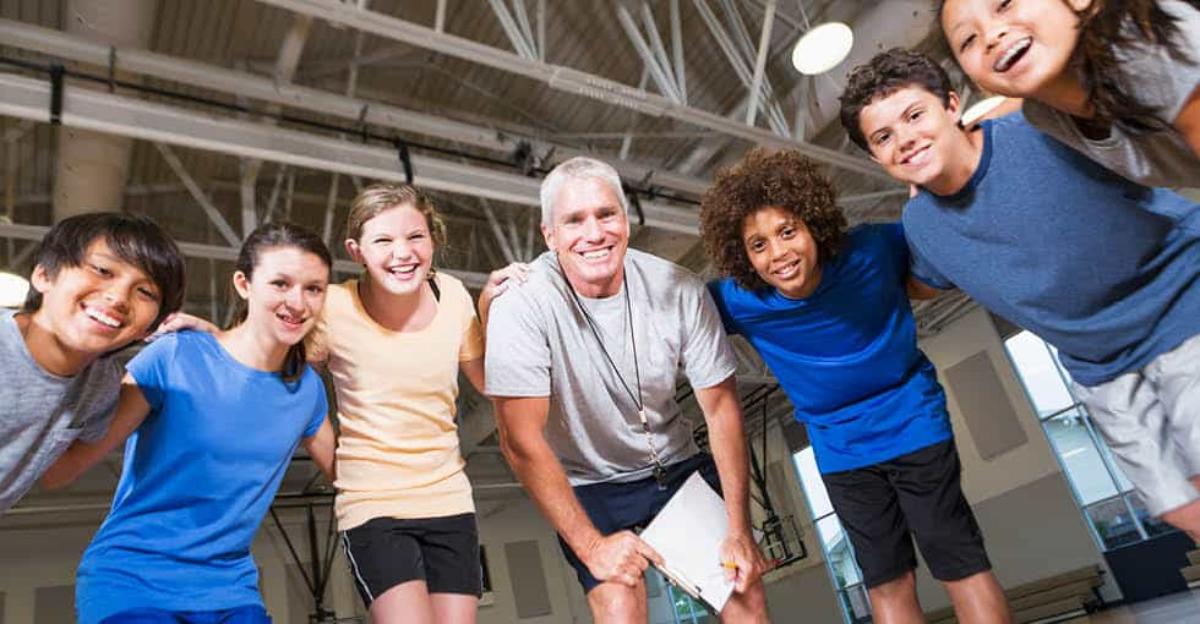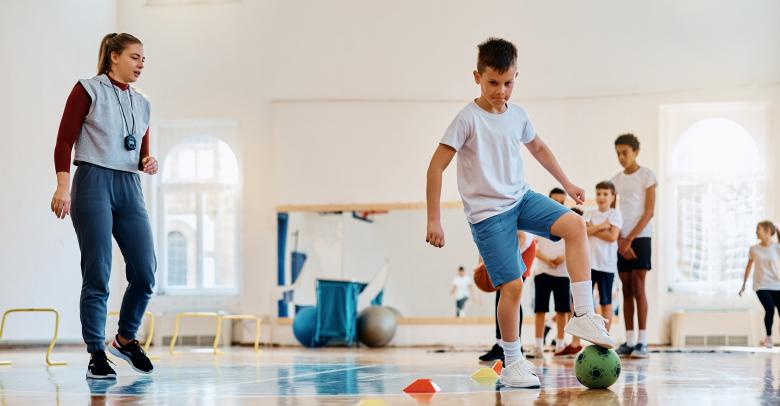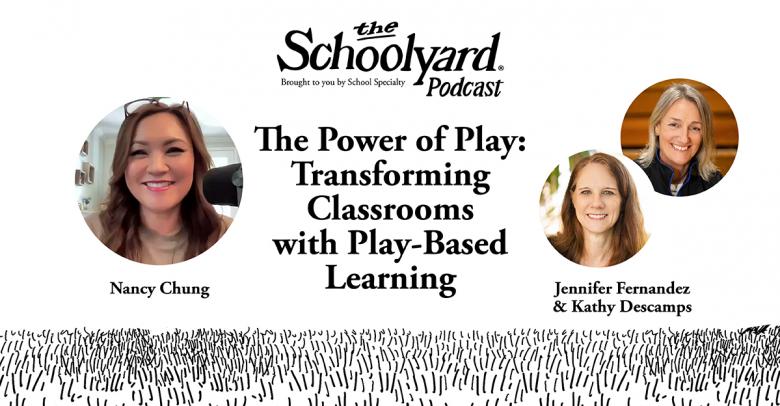When teaching PE, are all of your students successful in reaching the objectives of a lesson? If your answer is “affirmative,” way to go! If, however, they are not all reaching the objectives or being appropriately challenged, this blog is for you. It is important to know how to adapt your activities in a variety of ways in order to help all students, including those with special needs, achieve your objectives.
Students have many things in common, but they also differ in so many ways. They have diverse ways of learning, their fitness and skill levels vary from one extreme to the other, they may enjoy varying levels of competition, their reasons for being active are not the same, and so forth. Even in a “typical” general education (gen ed) PE class, there is a wide range of abilities, fitness, and competitive levels. By providing choices and challenges, teachers can help to address the variety within the group. It is your job to adapt and tweak the variables in PE class in order to allow all of your students to be successful.
This blog will cover a few of these strategies:
Focus on the Positive
Rather than look at just a student’s disability, it may help you to look at their abilities. What skills does the student possess that can assist them with reaching the objectives? What are they able to do well? How can you build on that?
How does the Disability Manifest Itself?
Just because someone is labeled with a disability does not necessarily mean they will have difficulty in reaching objectives in PE. Many students, disabled or not, have difficulties. By noticing the things they have difficulty doing, you may be able to adapt the activity or environment to downplay those challenges or help them overcome them. Things such as difficulty focusing on a task, lack of technique, limited mobility or strength, etc. may be challenging, but certainly do not make things impossible. There may also be issues you see in your gen ed students, so by adapting for your students with disabilities you may be helping others, as well.
Utilize Peer Tutors
Peer tutoring, where students work in pairs or in small groups to maser skills, can be very beneficial for both disabled and gen ed students. Since students with disabilities may thrive where there is a smaller ratio of student to teacher, having a peer tutor helps address that need. It is also nice to have a student with strong skills be a good role model for students working to build those skills. There are several models of peer tutoring:
- Unidirectional – Where the student with the disability is always the “student” in the pair
- Reciprocal – Both take turns being tutor and student
- Class-wide – The entire class is divided into pairs and reciprocate tutoring roles
- Cross-aged – Older students come into the class to help the younger students
Peer tutors are most effective when they’ve been given clear instructions regarding the best ways for their buddies to learn and receive feedback. It is important for peer buddies to be taught not to over-assist or be condescending toward their peer with a disability, but to treat them simply as a member of their class.
Utilize Paraprofessionals/Aides
Many students with disabilities have aides who move with them from class to class in order to help them be successful. Some aides may be one-on-one, while others are shared with several students or the whole class. The key to success with paraprofessionals/aides is to be clear in communicating your expectations. What would you like them to do during your PE class to help their student(s) be successful and safe? Go over these expectations and foster a collaborative relationship. Let them know they are appreciated and a vital part of the team. Explain that they are responsible for attending and assisting the student in the least restrictive or invasive manner possible. They need to allow their students to do as much as they can independently, but to be there when they need assistance. They should be prepared for activity in clothing, footwear, and attitude. They should do their best to keep their student from interfering with others’ learning as well as enhancing their own.
Adapt the Activity
Many games and activities can easily be adapted to increase success for students with disabilities. Teach all your students that adapting the rules to a game or sport is a skill you want all of them to have. Allow them to come up with new ideas for ways to make the game more fun, active, and safe for everyone. A few examples would be to play with smaller teams, on a different surface, with simplified rules or different ways to score. When it comes to dance, allow students to change moves or the tempo of the music.
Adapt the Equipment
Find out what your students can do and use special equipment or modify existing equipment to allow them to do that. This typically involves bigger, lighter, slower moving tossables and striking implements. For example, beach balls or balloons in place of volleyballs, or a light racquet to strike a ball instead of a bat. Blind or visually impaired students, for example, can have increased success in object control skills when using an object that makes noise, such as a bell ball.
Don’t Sacrifice Safety for Success
Overall, the goal is to have students with disabilities participating and achieving success, but never at the expense of their or the other students’ safety. Do your research to know what is and isn’t safe for your participants. For example, is anyone allergic to latex? Are there contraindicated exercises for students with a specific disability? Once you are sure of what you can and can’t do, proceed.
Use a Variety of Instructional Strategies
There are a variety of strategies for instructions and practice. Each may work for differing populations:
- When large groups are overwhelming, break into smaller groups or pairs.
- Break skills into mini chunks.
- Teach only a portion of the activity rather than the entire game.
- Provide breaks for students who get overwhelmed.
- Challenge students with mini-goals throughout the lesson.
- Use engaging targets.
- Use video recording to give feedback on skills.
- Keep activities age-appropriate.
- Allow students to explore their abilities and problem-solve on their own where and when appropriate.






Leave a Reply